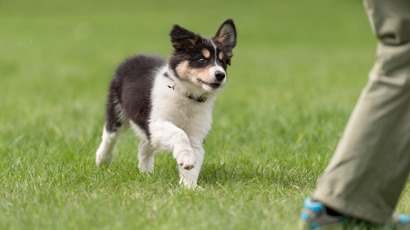A cool dog is a happy dog

Dogs aren't able to thermoregulate (control their body temperature) as effectively as humans, making them prone to overheating. Overheating can quickly turn to heatstroke which can become life-threatening if untreated. Find out how to minimise the risk of your dog overheating and what to do if you suspect your dog has heatstroke.
How do dogs cool down?
Unlike humans, dogs don't have sweat glands and use panting to cool down.
What causes excessive panting in dogs?
Panting is perfectly normal for dogs after exercise as panting is their method of regulating their body temperature. However, excessive or prolonged panting can be caused by heatstroke or poisoning and should be taken seriously.
How do I know if my dog is too hot?
A dog’s normal body temperature is 38- 39°C, and anything over 40.5°C becomes life-threatening. During heat stroke, a dog’s temperature rises rapidly to 40°C and higher. There are several tell-tale signs to look out for to tell if your dog is overheating:
- Excessive panting
- Wide-open eyes
- Red or purple tongue and/or gums
- Fast or irregular heartbeat
- Disorientation, lethargy or instability
- Excessive salivating
If you know how to use a rectal thermometer use it to check your dog's temperature if you suspect overheating or heatstroke.
How to reduce heat in dogs
Dogs do not have very effective thermoregulation as they cannot sweat and can only cool down by panting. If untreated, heatstroke in dogs can cause body organs to “cook”, resulting in kidney or liver failure, brain damage, or even death. Quick action reduces the chances of long-term side effects.
If you notice your dog is overheating stay calm and take the following steps:
- Wet it immediately and get it to a vet quickly. Note: Do not use cold water/ice as this causes constriction of the skin blood vessels.
- If symptoms are mild or you cannot get to a vet, wet your dog and use a fan to cool it.
- Keep wetting it until panting has stopped and body temperature has returned to normal.
- You should provide cool drinking water but not force water into the dog's mouth.
- If you know how to use a rectal thermometer, check your god's temperature to ensure it is returning to normal.
- Monitor your pet for the rest of the day, and if it is unstable, has blue/purple gums, salivates excessively or seems unwell in any way, visit a vet as soon as possible.
Depending on the severity of the heatstroke, your vet may do blood tests and place the dog on a drip. Vets have a number of ways to reduce a dog’s body temperature that you cannot do at home.
How to keep dogs cool in cars
In summer, car travel and exercise should be done in the cooler parts of the day to avoid heatstroke in your pets. Caution must be taken when dogs are in a car as they can heat up incredibly fast – up to 10°C higher than the environmental temperature in 10 minutes and 20°C higher in just 30 minutes, reaching 50°C on a 30°C day. Even on cooler days, the temperature of the car increases by about 5°C every hour. Be sure to run the air conditioning when your dog is in the car, keep them shaded and avoid leaving them alone in the car even for short periods.
Dogs pant to cool down, but excessive panting – in a hot car, or after exercise in the hottest part of the day – causes swelling of the back of the mouth, making the panting less efficient, so the body temperature rises rapidly.


